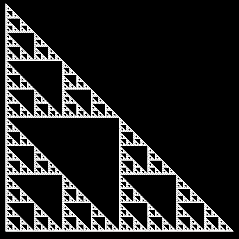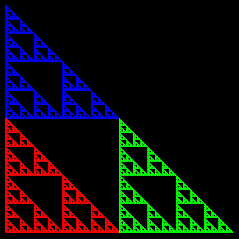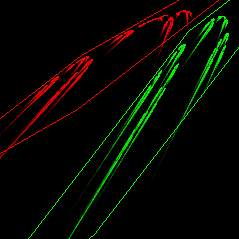|
Fractals are images of infinite complexity, characterized by
being "similar" to themselves in some sense at all scales of magnification.
Iterated function systems are a method of generating fractals using self-similarity. An IFS image is defined as being the sum of geometric transforms of itself. It turns out that simply specifying the transforms along with a weight for each transform is enough to determine the image. For example, the Sierpinski Triangle is made up of three half-size copies of itself. Symbolically,
I = p1T1(I) + p2T2(I) + ...
where the Ti are the transforms and the pi are weights adding to 1. The transformed images may overlap. The transformations I use are affine transformations, which mean they transform parallel straight lines into parallel straight lines. Thus each transform changes the rectangular image boundary into a parallelogram. Thus an IFS image may be defined simply by giving a few parallelograms, yet the resulting image may have infinite detail! The IFS algorithm for generating the image is simply this:
|

|

|

